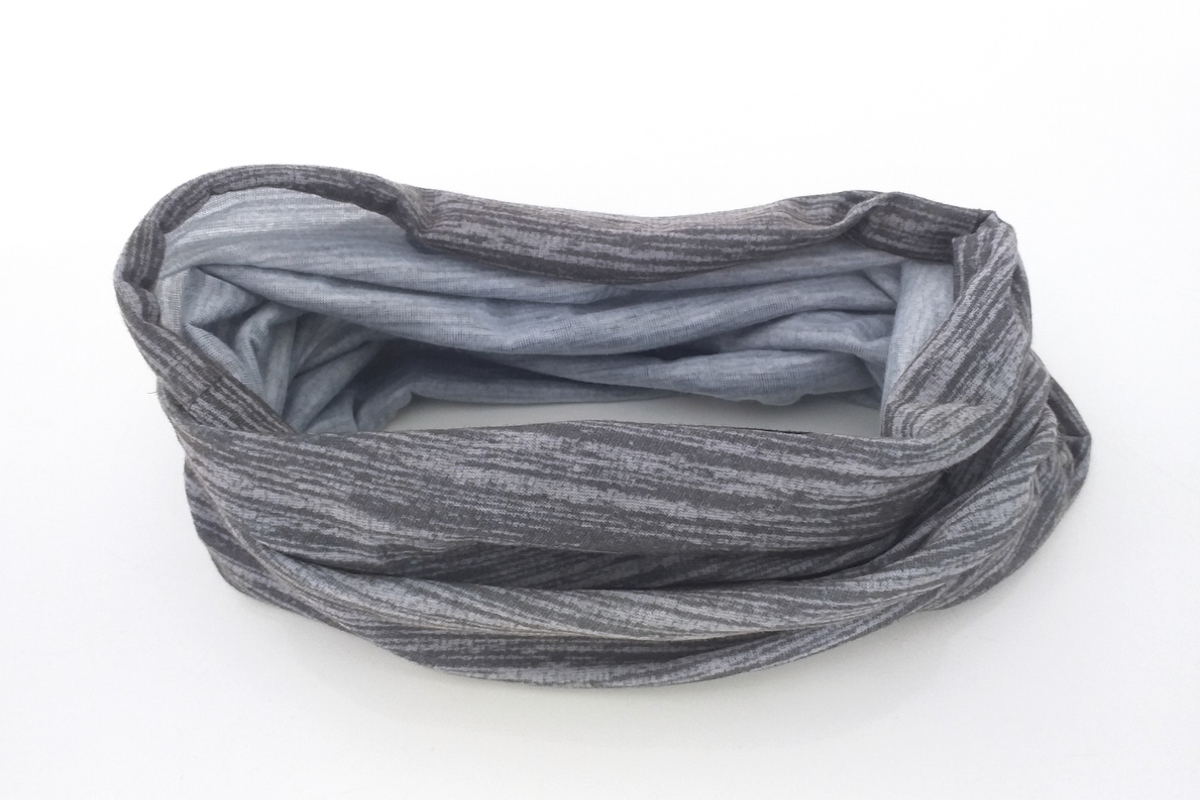As reported by Fast Company, professors at Duke developed their testing mechanism (which they say can be cheaply set up by other labs and/or companies producing masks) when approached by a local volunteer group who wanted to donate face coverings to those in need—and to donate a kind that would actually protect. Eric Westman, MD, of the School of Medicine, and Martin Fischer, PhD, of the chemistry department, collaborated on a test using a black box, a laser, and a cell phone camera to visualize the pattern of respiratory droplets. RELATED: For more up-to-date information, sign up for our daily newsletter. The resulting study, published in Science Advances, explains that masks were tested by being worn by a person who then spoke the same phrase into the box the same amount of times. Droplets were visible thanks to the light provided by the laser. “A simple computer algorithm [was] used to count the droplets in the video,” the paper reads, providing data that allowed the researchers to rank the masks for effectiveness. Researchers tested 14 different mask types and one swath of mask material. Unsurprisingly, the fitted N95 mask, like healthcare workers wear, was most effective at disrupting droplets, followed by a surgical mask and a poly-cotton blend mask. Handmade cotton versions fell a little further down. And last on the list—even below no mask at all—was a neck fleece. Sometimes called neck gaiter, it’s an item commonly worn by runners or people participating in other outdoor sports and activities to stay warm. It can be worn around the neck or pulled up over one’s face.ae0fcc31ae342fd3a1346ebb1f342fcb But neck gaiters are not designed to block droplet spread, and—as these researchers found—are terrible at it. Speaking with a fleece on generated more droplets than speaking without one. This is probably because the material of the gaiter actually diffuses droplets, generating more smaller ones. “Of course, what makes that problematic is that smaller particles could actually be carried away with air much more easily than big particles that might just drop down to the floor,” Fischer told Fast Company. While there have been conflicting comments made by public health agencies about whether airborne transmission is a serious COVID danger, many experts believe that it’s a major concern. There is evidence that infection doesn’t only occur from direct person-to-person contact (i.e. someone with COVID coughs in your face) but can also happen through aerosolized droplets lingering in the air. For this reason, Duke researchers posit that the smaller droplets created from speaking (or coughing, sneezing, singing, etc.) through a neck fleece may be even more dangerous than what you’d generate without covering your face. So while these products may have kept you cozy on many winter jogs, they are not suitable for COVID protection. Stick to other forms of face coverings and put your gaiter away for now. And for more ways to choose the right one, check out If Your Mask Doesn’t Have Two of These, It’s Not Working, Study Says.
